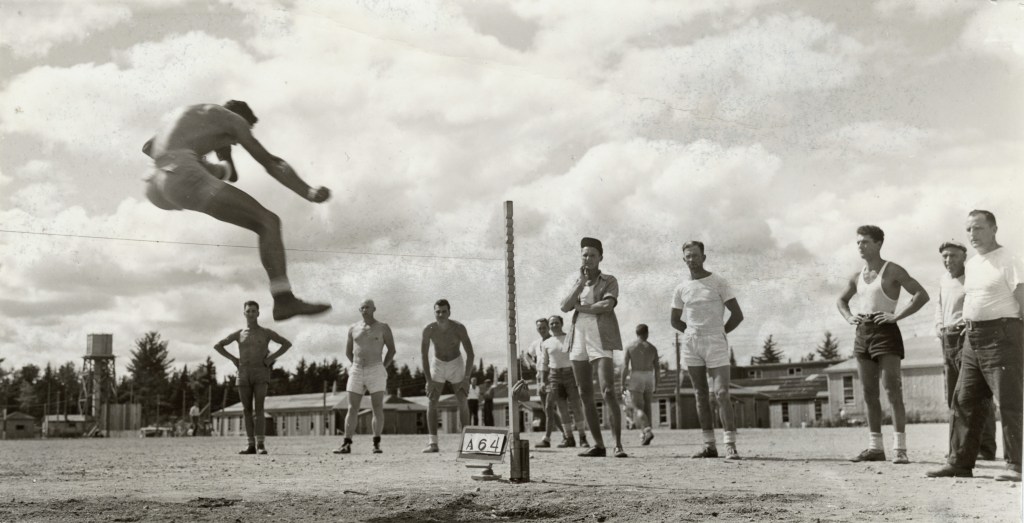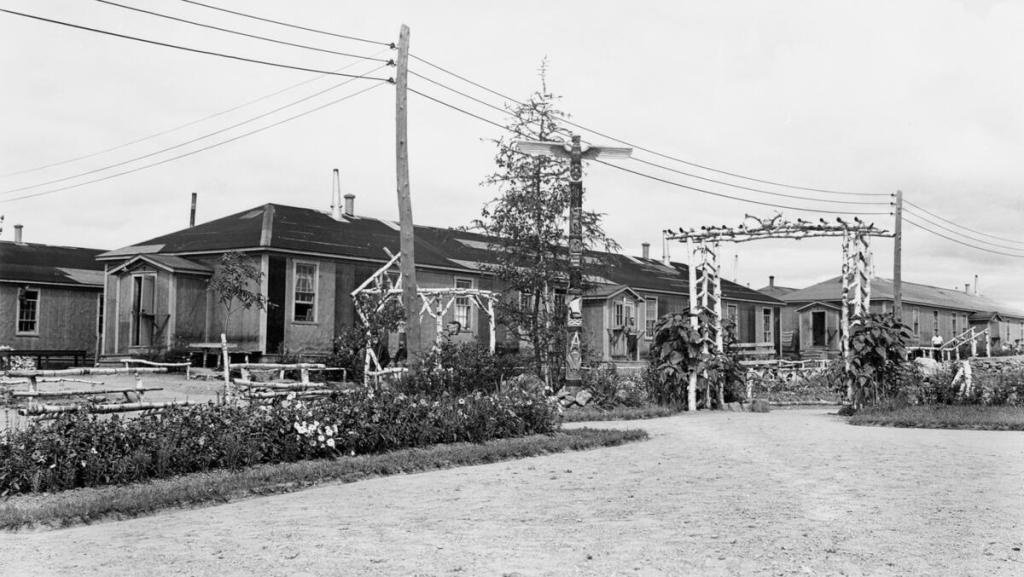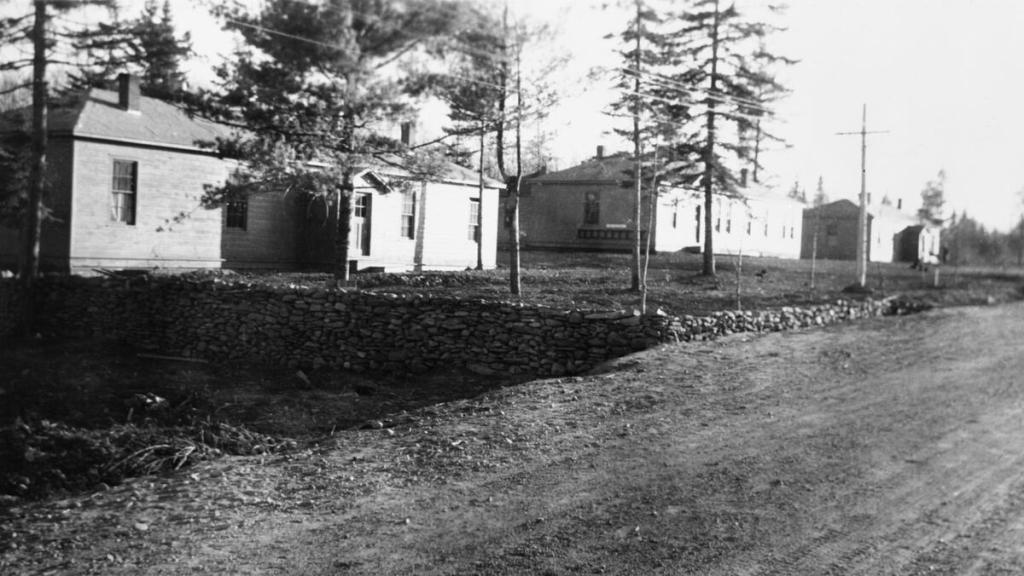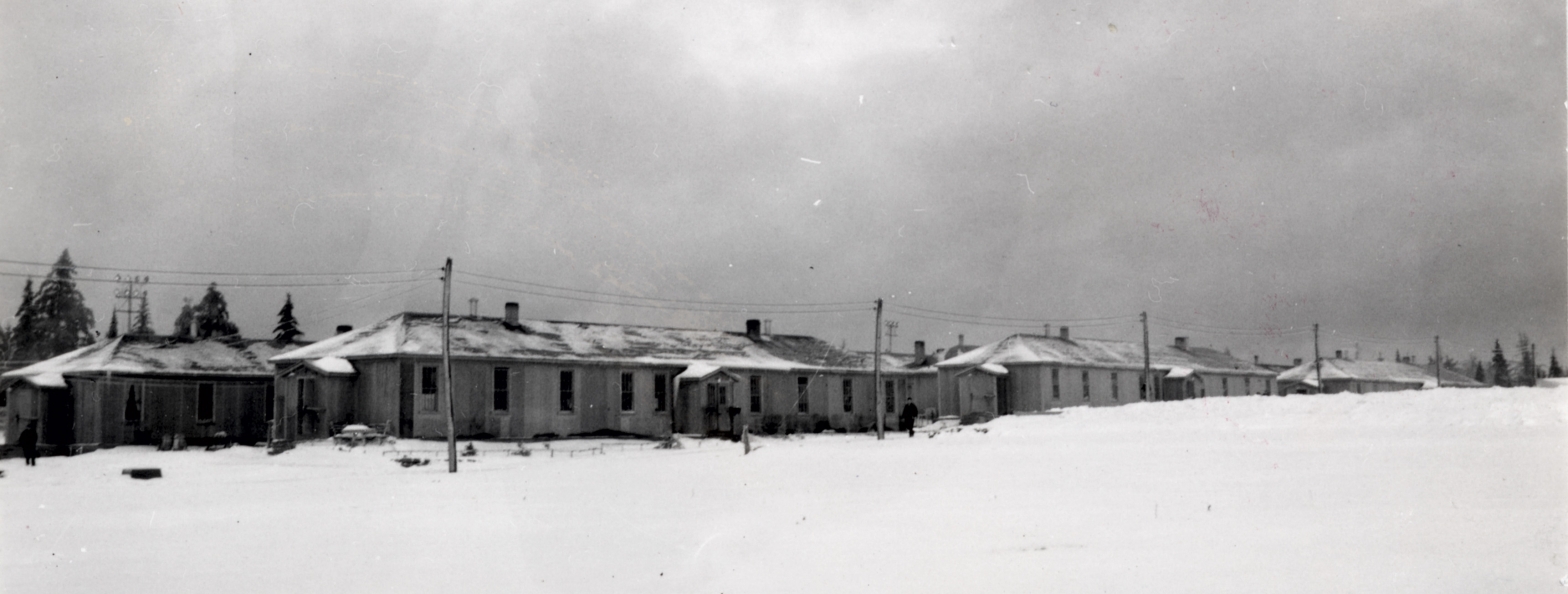Date Opened: August 1940
Date Closed: October 1945
Capacity: 1,000
Type of POW:
– Refugees (August 1940 to June 1941)
– Civilian Internees and Enemy Merchant Seamen (November 1941 to August 1945)
Description:
Prisoner of War Camp B – later Camp 70 – was Canada’s only internment camp in the Atlantic provinces during the Second World War. Located roughly thirty kilometers east of Fredericton, the camp was located within the Acadian Forest Experiment Station and had been the site of an unemployment relief camp in the 1930s.
The transfer of thousands of combatant prisoners, Enemy Merchant Seamen (EMS), and civilian internees from the United Kingdom to Canada prompted a significant expansion of Canadian internment operations in mid-1940. Among the sites suggested by Military District 7, the abandoned relief camp met many of the Department of National Defence’s requirements, prompting preparations to convert the site into an 600-man internment camp in mid-1940.
While the relief camp’s buildings were suitable to house most of the camp guard’s force and staff, all of the buildings in the main enclosure, including prisoners’ barracks, kitchen and mess, recreation hall, office, and detention cells, were new army-standard facilities. A barbed wire fence and four sentry posts were erected around the enclosure, just in time for the first internees to arrive in August 1940. Only these were not the average internees; most were Jewish refugees.

Having fled to Germany and Austria for the United Kingdom between 1937 and 1939, these Jewish refugees had been detained by the British after war broke out. All male, over half of the refugees were only between the ages of sixteen and twenty. A third had spent time in a Nazi prison or concentration camp and over half had relatives injured or killed by the Nazis. Most expected to be released shortly and, fortunately, this proved to be the case. The remaining refugees were transferred to Camp A (Farnham), Camp I (Île-Aux-Noix), and Camp N (Sherbrooke) in June 1941 to await their release.
Camp B reopened in late July, this time to accept 588 German internees – all internees detained in or by Canada – transferred from Camp K (Kananaskis) as well as twenty-four German EMS and four German Civilian Internees originally detained in Newfoundland (and then at Petawawa). The transition from refugees to civilian internees necessitated some security upgrades, namely the addition of a second barbed wire fence around the main enclosure, adjusting the layout of the towers, and additional guards.
Over the following years, many of the German-Canadian internees were released on parole, while those deemed higher-risk remained at Camp B, which was renamed Camp 70 in September 1941. The population of the camp continued to slowly dwindle but transfers of additional German and Italian civilian internees and Enemy Merchant Seamen meant the camp remained open through 1945.
With nothing but time on their hands, the prisoners at Camp 70 eventually developed a comprehensive education program to help prepare them for the future. Teachers remained in short supply but course offerings continued to grow. Language courses – namely English, French, Spanish, Italian, and German – and each with varying levels of difficulty were among the more popular courses while other internees learned bookkeeping, shorthand, banking, animal husbandry, farming, forestry, algebra, physics, chemistry, draughting, photography, sketching, music, and even taxidermy. The camp also offered technical courses for EMS including navigation, maritime law, signalling, hydrography, geography, mechanics, engineering, and ship building.

With access to a large recreation field in the middle of the enclosure, the prisoners set about converting it into a football (soccer) field. Matches between teams composed of German and Italian teams were frequently played during the summer months while others busied themselves with tennis, handball, running, high-jump, discus, weight-lifting, and boxing. A skating rink was built on the recreation field during the winter.
Those with musical talent put together several bands, with instruments provided by the War Prisoners’ Aid of the YMCA or the International Red Cross. By mid-1943, the camp had a string orchestra, a brass orchestra, a chamber music ensemble, and a twenty-man choir. A mix of professional and amateur musicians, they put on regular concerts for their comrades and, occasionally, the guards and camp staff. The prisoners also formed a theatrical group and, with costumes provided by the War Prisoners’ Aid or made by hand, held performances in the camp’s recreation hall.

Like other camps with EMS, handicraft proved especially popular. Prisoners churned out model and toy boats, cigarette cases, pen stands, as well as portraits and scenic paintings to be kept as souvenirs, traded with the comrades, or, later, sold to the guards and camp staff.
Gardening also proved a popular pastime and, like civilians across the country, the internees planted Victory Gardens which not only helped “beautify” the camp but provided prisoners with fresh fruits and vegetables. Some 15,000 square feet of gardens, featuring seventy garden patches were planted as of June 1945, amounting to ten to fifteen square feet of garden per internee.

Work opportunities remained limited for most of the internees in Camp 70. Some were employed in general maintenance around the camp while a constant need for fuelwood to heat the camp’s stoves and boilers meant there were always work parties working in the adjacent woods. The Italian EMS, deemed lower security risks and more amenable to work, were transferred to Ontario where they were employed in maintaining railway lines near Brockville and Sault Ste. Marie.
Although the internees were civilians and not combatants, there remained a strong Nazi presence in the camp that remained active until late 1944. Five internees formed the basis of this group and their twenty or so followers included henchmen who spied on their fellow internees and threatened or punished those deemed traitors to Nazi Germany. Transfers and Germany’s surrender eventually put an end to Nazi control in Camp 70 so that by January 1945, there remained only known six Nazis in camp. The rest of the camp was deemed non-political.
The extended period of internment for many of the EMS and internees who, by 1945, had spent the last six years prisoners of war, took its toll and morale steadily declined in camp. With the repatriation of over 100 German internees as part of a prisoner exchange with Germany in November 1944, there remained only less than 200 POWs in camp (eighty-four Germans, seventy-seven Italians, and twenty-four of other nationalities). This number continued to decrease in the following months and, on August 31, 1945, the remaining internees were transferred to Camp 23 (Monteith) and Camp 70 closed.
The end of the war meant Camp 70 was no longer needed. The buildings were sold off as surplus and several were relocated throughout New Brunswick and found new life as Legion Halls, private residences, a post office, and a dance hall. A concrete foundation and a sign marking the camp’s location is all that now remains, although the sign erroneously refers to the camp as “Internment Camp B70,” a designation that was never used. The New Brunswick Internment Camp Museum in nearby Minto is dedicated to preserving the history of Camp 70 and has a collection of almost 600 artifacts.
Location:
Pictures:











Further Reading:
- Posts about Camp 70 (Fredericton)
- Jones, Ted. Both Sides of the Wire: The Fredericton Internment Camp. Vol. 1. Fredericton, NB: New Ireland Press, 1988.
- Jones, Ted. Both Sides of the Wire: The Fredericton Internment Camp. Vol. 2. Fredericton, NB: New Ireland Press, 1989.
- New Brunswick Internment Camp Museum.
